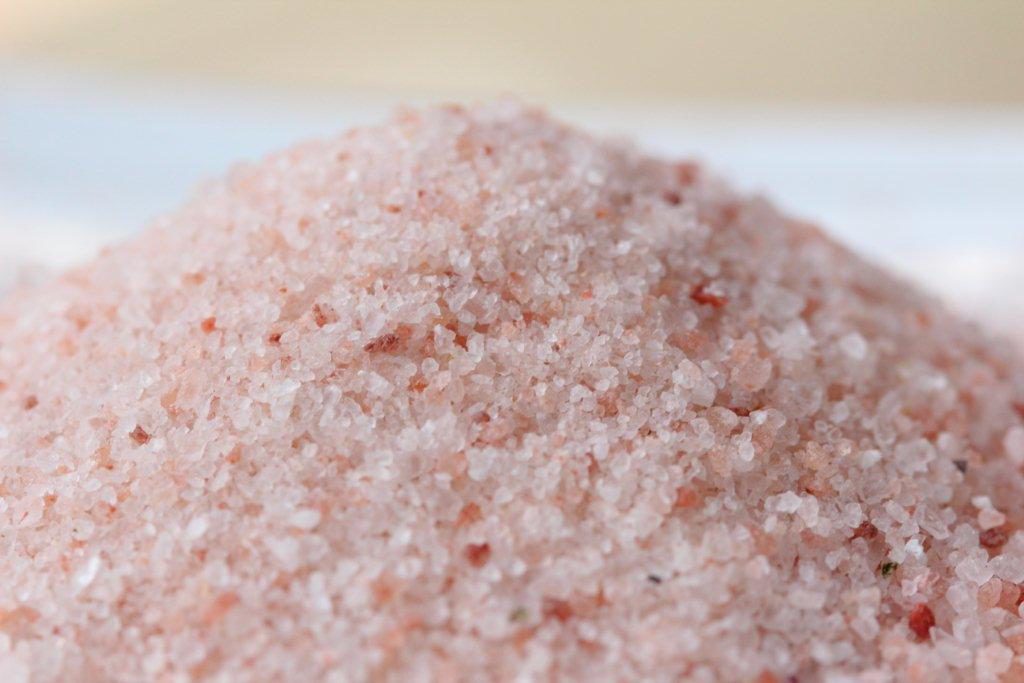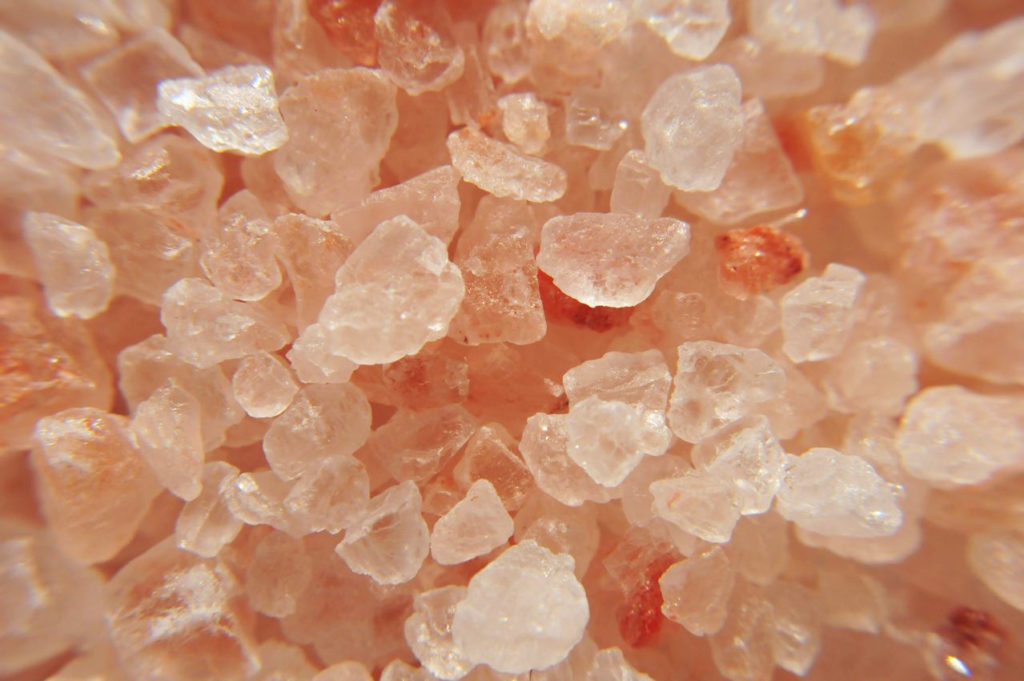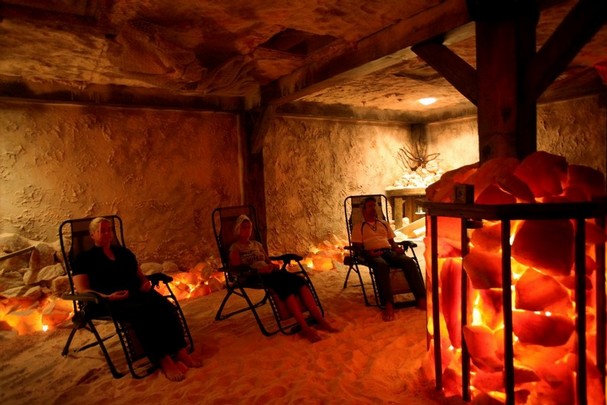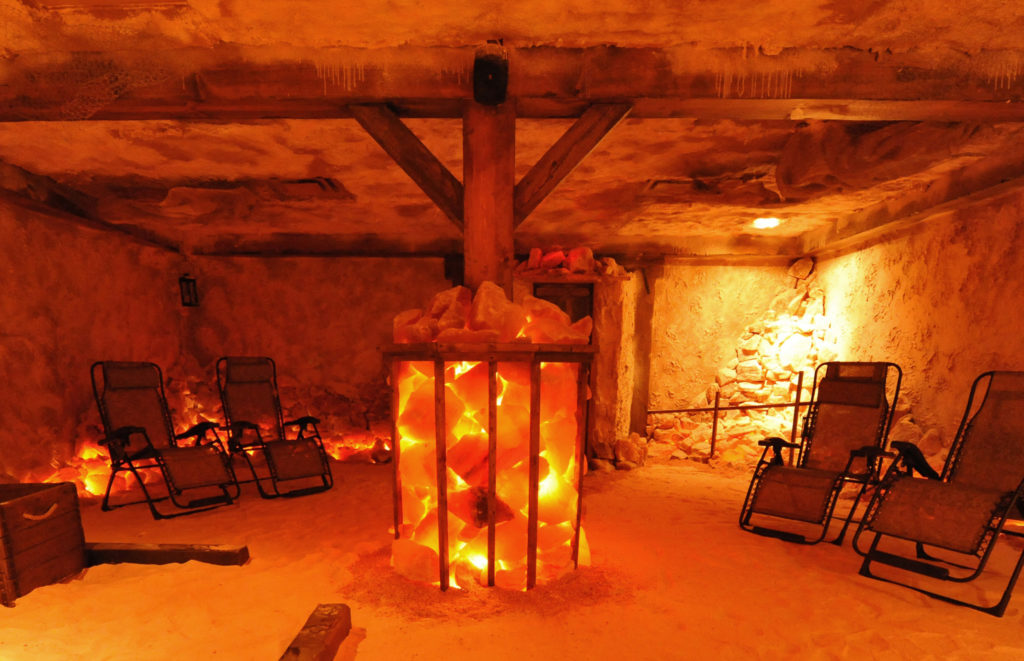
Salt plays a major role in our health: it is a well-known fact that too much salt, as well as the lack of it in our diets can lead to serious health concerns.
The truth is, salt is essential for life. We cannot survive without it. Even the smallest processes in our bodies need salt or its ionized form. So how is it possible that our consumption of salt poses a threat to our health?
Perhaps it is not emphasized enough that there is a huge difference between processed salt (commercial table salt) and pure, unrefined, wholesome salt, like Himalayan crystal salt. The reality is that commercial table salt is no longer the salt that is essential for life. It has nothing in common with the natural salt of the primal oceans all life emerged from.
Commercial table salt is typically 97.5 percent to 99.9 percent sodium chloride with added iodine. Most commercial table salts undergo a bleaching process, and most often contain anti-clumping agents and other additives that are harmful to our health. During the process of chemical cleaning, essential minerals and trace elements are removed as ‘impurities’. The result is an unnatural, aggressive substance that is highly toxic to our bodies. [1]
This unwholesome, hazardous substance is found in salt shakers all across the world and also in processed foods as a preservative. While our body only requires a minute amount of salt (0.007 ounces) a day, the average daily consumption of table salt in the U.S is between 0.4 ounces and 0.7 ounces per person. [1] The body recognizes table salt as a hazardous cellular poison and wants to eliminate it as quickly as possible. However, it can only excrete 0.17 ounces to 0.25 ounce a day though the kidneys, depending on age and gender. This causes a constant overburden on the organs of excretion. The body keeps trying to eliminate or neutralize the excess salt in different ways to protect the cells and the organs, but in the long run, the damage is unavoidable.
The consequences of consuming table salt are clearly dangerous, yet people continue to use it day after day. And even though the daily salt intake per capita in the U.S. is way higher than the amount required by the body, most people are mineral deficient. Mineral deficiencies can lead to a wide array of health problems in fact. The solution might be as simple as replacing commercial table salt with a natural, unrefined, mineral-rich salt, such as Himalayan crystal salt.
 Himalayan crystal salt is said to be over 99 percent pure. In addition to sodium, which actually is vital for many bodily functions, it also contains essential minerals and trace elements that the human body is comprised of. Himalayan crystal salt is relatively high in iron, magnesium, phosphorus, calcium, potassium and chloride. It also contains traces of boron, fluoride, iodine, zinc, selenium and copper, all of which are necessary for our health. [2]
Himalayan crystal salt is said to be over 99 percent pure. In addition to sodium, which actually is vital for many bodily functions, it also contains essential minerals and trace elements that the human body is comprised of. Himalayan crystal salt is relatively high in iron, magnesium, phosphorus, calcium, potassium and chloride. It also contains traces of boron, fluoride, iodine, zinc, selenium and copper, all of which are necessary for our health. [2]
Himalayan crystal salt comes from the Punjab region of Pakistan, from salt mines thousands of feet deep below the foothills of the Himalayas. The salt from these mines has formed over millions of years under intense tectonic pressure and has sat untouched for millions more, making it one of the purest salts on the planet. Himalayan salt is believed to be composed of remnants of the original, primal oceans. Its pinkish color is indicative of its mineral content.
Consuming Himalayan crystal salt offers numerous health benefits: it regulates the water levels within the body for proper overall functioning; balances the body’s pH levels; encourages healthy blood sugar levels; promotes cellular energy creation; improves digestion and the absorption of nutrients from foods; aids vascular health; provides circulatory support; improves bone strength; promotes kidney and gallbladder health; regulates the metabolism; encourages better sleep patterns; and reduces the appearance of aging. [3]
Even though Himalayan crystal salt may offer many health benefits, it still is naturally high in sodium. Therefore, it should be consumed in moderation.
Himalayan crystal salt also has antibacterial, antifungal, antiseptic, and anti-inflammatory properties. Consequently, it has many therapeutic uses as well. In a salt bath, it can help draw out toxins, remineralize the body, and improve several skin conditions, such as psoriasis and eczema. As a salt scrub, it exfoliates and deep cleanses the skin. When inhaled, it can improve allergies and respiratory problems. Himalayan salt lamps are often used to purify the air by attracting and trapping pollutants. They also release negative ions into the air, which may reduce stress, improve breathing, and increase focus.
The benefits of Himalayan crystal salt seem to be endless. So where can you find it? The one place in Naples where you are guaranteed to find tons of Himalayan crystal salt –actually 20 tons of it – is an alternative health center located at 4962 Tamiami Trail N., called the Salt Cave.
In 2009 the Salt Cave was opened to bring a unique therapy, called Halotherpay or Salt Therapy to Naples. This natural health modality is based on recreating the therapeutic environment of naturally occurring salt caves with the use of dry salt vapor to combat respiratory ailments, skin irritations, allergies, stress, fatigue, and many other health concerns.
In order to recreate the healing microclimate of the ancient salt caves, an actual ‘salt cave’ was built within the Salt Cave. The salt cave itself is a completely separate space, isolated from the rest of the facility. It was designed to resemble a cave or rather an old salt mine. The floor, the walls, and the ceiling are covered with fine, food grade Himalayan crystal salt. Tons of large, illuminated salt rocks fill the room, placed along the walls and also in wooden crates. The salt concentration of the air during therapy is approximately 73.5 mg (0.0002592 oz) – similar to the consistency of salty air at the beach on an average morning. The salt aerosol emerging from the salt generator consists of salt particles in sizes of 1-5 micrometers. These tiny particles can easily penetrate deep into the lungs and deposit upon the skin to offer relief for many reparatory and dermal conditions. In addition to its health benefits, the beautifully constructed and welcoming salt cave also provides a peaceful and spiritual experience for those who are open to it.
Nevertheless, there is way more to the Salt Cave than its name suggests. In the past nine years, the Salt Cave has grown into an extensive and versatile healing facility, offering many alternative health modalities besides Halotherapy, including Biofeedback, Far Infrared Sauna, VIP Light Therapy, Ionic Detox Footbath, Compression Therapy, Electrotherapy, Crystal Bed Therapy, Cupping, Herbal Protocols, and Spiritual Healing.
With the help of these natural therapies, the Salt Cave has assisted many people to successfully treat/manage their ailments and also in many cases to prevent illness. The owner is passionate about educating and helping anyone who comes to the Salt Cave to find natural ways to regain their optimal health.
In addition to the multiple services, the Salt Cave offers a variety of Himalayan salt products, herbal supplements, CBD oils and edibles, crystals, gemstone jewelry, and lamps for sale. Over the years, the Salt Cave has become a popular destination – sort of a one-stop shop – for those seeking relief and a natural approach to their health concerns.
For more information, visit www.saltcavenaples.com or call 239-403-9170.
REFERENCES:
[1] Water & Salt: The Essence of Life by Dr. Med Barbara Hendel and Peter Ferreira
[2] https://www.livestrong.com/article/26690-health-benefits-himalayan-salt/
[3] https://draxe.com/pink-himalayan-salt/


